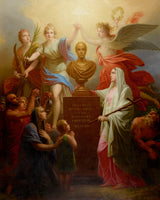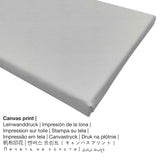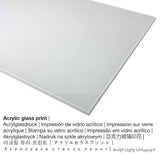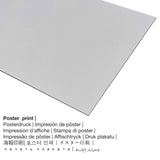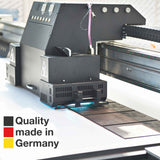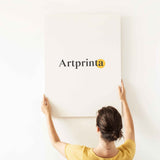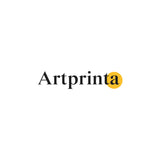Friedrich Heinrich Füger, 1814 - Amụma gbasara ngozi nke udo - ọmarịcha nka.
Ụtụ gụnyere. Mbupu gbakọrọ na ndenye ọpụpụ.
Ihe karịrị 200 afọ ọrụ nka a na-akpọ Allegory on the blessings of peace was painted by Friedrich Heinrich Füger. The painting had the size: 315 x 252 cm - frame: 322 × 259 × 5 cm. Mmanụ na kwaaji was applied by the artist as the technique for the artwork. The original artwork was inscribed with the following information - signed and dated lower right: Henricus Füger faciebat. This piece of art can be viewed in in the Belvedere's digital art collection, which is located in Vienna, Austria. We are glad to mention that this ngalaba ọha work of art is being supplied with courtesy of © Belvedere, Vienna, inventory number: 3765. Additionally, the work of art has the creditline: transfer from the Kunsthistorisches Museum, Vienna. - 1940 inventory in 1921. The alignment of the digital reproduction is portrait with an image ratio of 1: 1.2, nke pụtara na ogologo bụ 20% mkpụmkpụ karịa obosara. The painter Friedrich Heinrich Füger was an artist, whose style was mainly Classicism. The Classicist artist lived for 67 afọ and was born in 1751 in Heilbronn and passed away in 1818.
What does the original artwork description of the Belvedere state about the artwork made by Friedrich Heinrich Füger? (© - Belvedere - Belvedere)
This allegorical history painting is one of the last great works Friedrich Heinrich Füger. Emperor Franz I./II. is shown here as a man but as antique-style bust. Thus it is raised to a higher, classic, timeless level. Three Genii hold the attributes cornucopia, palm and laurel wreath, which stand for wealth and fertility, peace and victory. About the stone bust of triangular rays Nimbus symbolizes the Christian Trinity. The personification of belief (Agenzia) on the right side is shown as a Roman Vestal with cross. The garlanded with reeds river god is the Danube. The people from the people on the left ask for justice, peace and prosperity. A man holding the iron shackles on high, points to the liberation of the Napoleonic domination (1814). The plinth inscription refers to this as Franz I./II. referred to herein as the liberator of the home and the church. The latter title earned the Emperor by the withdrawal of many reforms of his uncle Joseph II. Predecessors of this painting are, according to Michael Krapf the "Apotheosis of Emperor Joseph II." (1779) and "Venetia and Dalmatia homage Emperor Francis II." (1797) by the same artist. [¹] Robert Keil points out that had Füger showed a live image "Emperor Franz as the liberator of Germania and Austrias" already on 23 February 1814 staged. Even here, the emperor was represented as a bust [²]. Notes: [1] Krapf, Michael, in:. History of Fine Art in Austria, Vol 5, ed. v. Gerbert Frodl, Munich et al 2002, p.336 f. [2] Keil, Robert: Heinrich Füger. 1751-1818. Only a few is granted to the light of truth to see, Vienna 2009, p.114 [Catherine Lovecký 6/2010]
Nkọwa nka ahaziri
| Aha nka: | "Allegory on the blessings of peace" |
| Nhazi nka: | sere |
| Okwu nche anwụ: | nkà nke oge a |
| oge: | 19th narị afọ |
| Emepụtara n'afọ: | 1814 |
| Afọ nka: | ihe karịrị afọ 200 |
| Usoro nka izizi: | mmanụ na kwaaji |
| Nha izizi (ọrụ nka): | 315 x 252 cm - etiti: 322 × 259 × 5 cm |
| Akara mbinye aka: | signed and dated lower right: Henricus Füger faciebat |
| Ụlọ ihe ngosi nka / ebe: | Belvedere |
| Ebe ngosi nka: | Vienna, Austria |
| Ebe nrụọrụ weebụ ihe ngosi nka: | www.belvedere.at |
| Ụdị ikike nka: | ngalaba ọha |
| Site n'aka: | © Belvedere, Vienna, nọmba ngwa ahịa: 3765 |
| kreditline ọrụ nka: | nyefee site na Kunsthistorisches Museum, Vienna. - 1940 ngwaahịa na 1921 |
Banyere omenka
| aha: | Friedrich Heinrich Füger |
| Ọrụ: | onye na-ese ihe |
| Nkewa onye nka: | omenkà nke oge a |
| Ụdị nka: | Ochie |
| Nwụrụ na afọ nke: | 67 afọ |
| A mụrụ: | 1751 |
| Ebe amụrụ onye: | Heilbronn |
| Nwụrụ n'afọ: | 1818 |
| Nwuru na (ebe): | Vienna |
Ngwa ngwaahịa ndị ahịa anyị nwere ike ịhọrọ
The product dropdown menu provides you with the chance to pick a material and a sizeaccording to your individual preferences. The following options are available for individualization:
- Mbipụta iko acrylic (nke nwere ezigbo mkpuchi iko): The acrylic glass print, which is often denoted as a fine art print on plexiglass, changes the original artwork into brilliant home décor. The artwork is printed with state-of-the-art UV direct printing technology. The result of this are vibrant and deep colors. The major advantage of a plexiglass art print is that contrasts and also granular details become identifiable thanks to the delicate tonal gradation of the print.
- Mbipụta akwụkwọ mmado (akwa akwa akwa): A poster is a printed sheet of flat canvas paper with a slight surface structure. It is optimally suited for framing your fine art print with the help of a special frame. Please bear in mind, that depending on the size of the canvas poster print we add a white margin of around 2-6cm around the print to facilitate the framing with your custom frame.
- Mbipụta kwaaji: The canvas direct print is a printed canvas stretched on a wooden frame. It has a particular impression of three-dimensionality. Hanging a canvas print: Canvas Prints have the advantage of being relatively low in weight, which means that it is quite simple to hang up the Canvas print without any wall-mounts. That is why, canvas prints are suited for any kind of wall.
- Mbipụta nke aluminom: Aluminium Dibond prints are prints on metal with an outstanding depth, which makes a contemporary impression by having a surface structure, that is not reflective. A direct Aluminium Dibond Print is the excellent introduction to fine art replicas with aluminum. Colors are bright and vivid in the highest definition, fine details of the print appear very clear, and you can really perceive the matte appearance of the product. This direct print on Aluminum Dibond is the most popular entry-level product and is a sophisticated way to display fine art reproductions, as it puts all of the viewer’s focus on the artwork.
Ngwaahịa a
| Ụdị ngwaahịa: | ezi nka mmeputakwa |
| Usoro mmeghari: | dijitalụ mmeputakwa |
| Usoro nhazi: | mbipụta dijitalụ (Mbipụta UV ozugbo) |
| Nlụpụta: | German mmepụta |
| Ụdị ngwaahịa: | mmepụta ihe na-achọ |
| Eji ngwaahịa emebere: | ihe ndozi mgbidi, foto mgbidi |
| Ntuziaka onyonyo: | nhazi ihe osise |
| Ụdị anya: | ( Ogologo: obosara) 1: 1.2 |
| Pụtara nke akụkụ akụkụ: | ogologo bụ 20% mkpụmkpụ karịa obosara |
| Nhọrọ akwa: | ígwè ebipụta (aluminium dibond), acrylic glass print (nwere ezigbo mkpuchi iko), mbipụta akwa akwa, mbipụta akwụkwọ mmado (akwụkwọ kwaaji) |
| Mbipụta kanvas (akwa akwa na etiti ihe ndọtị): | 50x60cm - 20x24", 100x120cm - 39x47", 150x180cm - 59x71" |
| Mpempe iko acrylic (nwere ezigbo mkpuchi iko) nha dị iche iche: | 50x60cm - 20x24", 100x120cm - 39x47" |
| Mpempe akwụkwọ mmado (akwụkwọ kwaaji) nha: | 50x60cm - 20x24", 100x120cm - 39x47" |
| Ụdị mbipụta aluminom dibond: | 50x60cm - 20x24", 100x120cm - 39x47" |
| Nhazi mbipụta nka: | na-enweghị etiti |
Ihe dị mkpa: We try everything in order to describe the products as closely as possible and to showcase them visually in our shop. Please keep in mind that the colors of the print products and the printing may differ somehwat from the presentation on the screen. Depending on your screen settings and the nature of the surface, not all colors are printed as exactly as the digital version shown here. Since the art prints are printed and processed manually, there might also be minor variations in the exact position and the size of the motif.
© nwebiisinka, www.artprinta.com (Artprinta)

